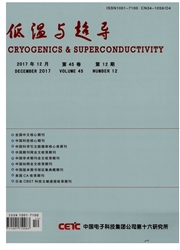

 中文摘要:
中文摘要:
传统热泵采用单一热源(空气源或水源),虽然也有利用多热源(蒸发器)的复合热泵,但往往采取蒸发器切换的工作模式,这种工作模式难以同时利用多热源能量来达到制热目的。双蒸发器耦合的复合热泵系统通过太阳能水源蒸发器与空气源蒸发器协同工作来提高其制热性能,但不同的蒸发器连接形式(串联与并联)必然导致复合热泵系统的制热性能发生变化。本文利用热力学方法对双蒸发器采用不同连接形式的复合热泵系统的热力学性能进行了比较分析。研究结果表明:无论双蒸发器并联还是串联连接的复合热泵系统均较单一热源(空气源)的热泵的制热性能均显著提高;双蒸发器并联连接的复合热泵系统的能耗较双蒸发器串联连接的复合热泵系统的能耗明显下降,双蒸发器并联连接的复合热泵系统需要增加一台压缩机,但其节能性显著,也更具经济性优势。
 英文摘要:
英文摘要:
The conventional heat pump system has single heat source( air - source or water - source). If multi - heat source is available the work mode must be switched between the evaporators. A new type heat pump with dual heat source collaborates air - source evaporator and solar water - source evaporator to work simultaneously. But different forms of configuration( parallel or cascade ) for evaporator can influence the systems behavior. Thermaldynamic analysis was taken for comparison of the system per- formance under two configuration forms of evaporator. The consequence shows that, no matter which kind of connection type can has higher COPh than the conventional heat pump system with single heat source( air source) ; and system with parallel evapora- tors can has more behavior than which has cascade evaporators on energy saving ability. Consequently, system with parallel evap- orators will add another compressor, but it has more superiority on energy saving.
 同期刊论文项目
同期刊论文项目
 同项目期刊论文
同项目期刊论文
 期刊信息
期刊信息
